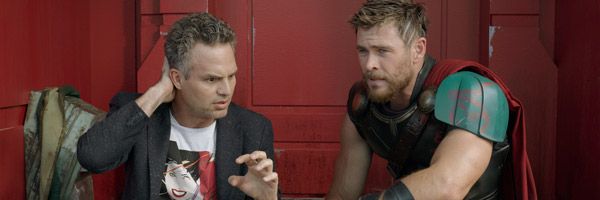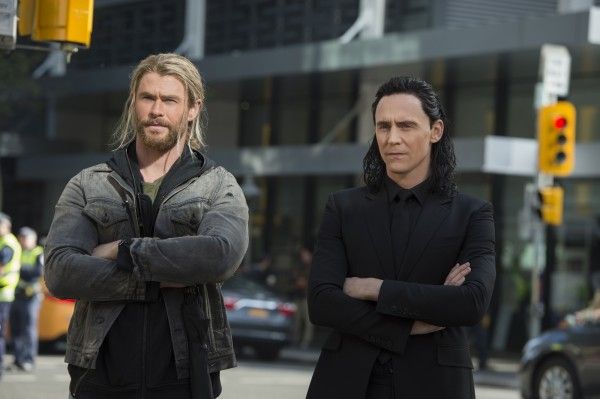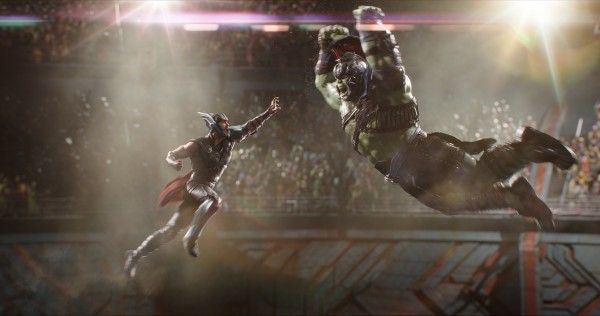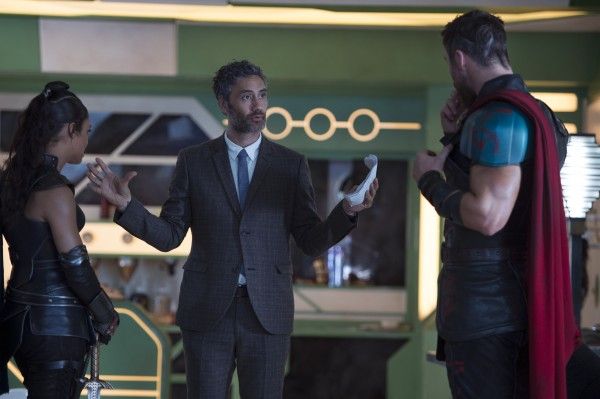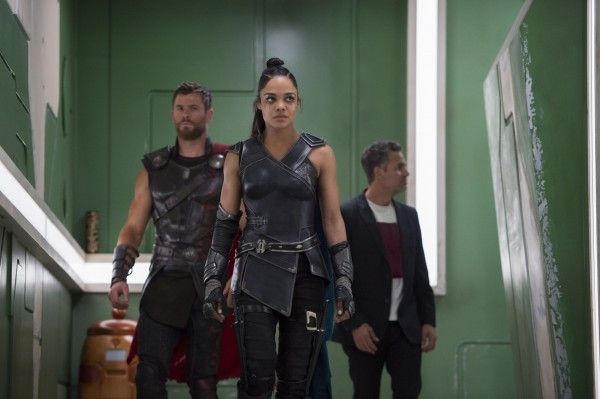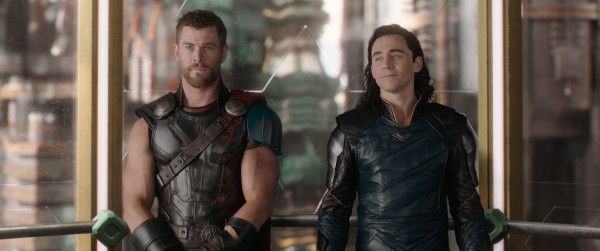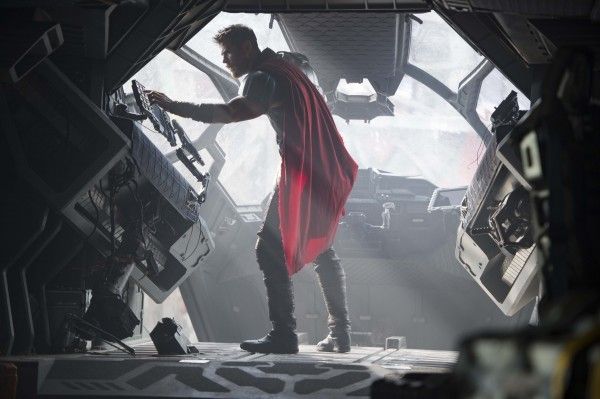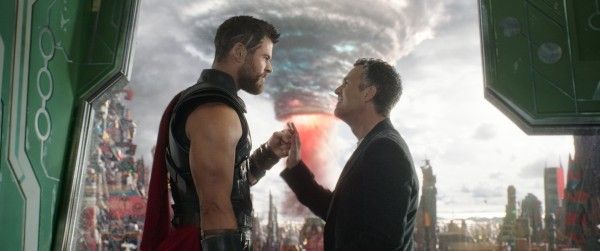A frequent criticism that gets thrown at the Marvel Cinematic Universe is that the universe really isn’t that cinematic at all—it’s more like television. The argument is that since all the Marvel movies mostly look the same, since all the directors have a very concrete box they have to stay in to keep the films visually and tonally consistent, and since the various characters populate each other’s films like a TV ensemble, the Marvel Cinematic Universe is a lot like taking a television approach to a massive, billion-dollar-grossing movie franchise.
A couple of years ago, I wrote an editorial arguing that treating movies like television was a bad idea, specifically singling out the Marvel Cinematic Universe. I still stand by it—I think we’d get better singular films if directors and writers were given complete creative freedom and weren’t serving the cohesive vision of the MCU. Kevin Feige is undoubtedly brilliant, but he’s basically a showrunner here. Calling the major shots while hiring interesting directors to add their own flavors here and there.
But you know what? It’s working. Reviews for the latest string of Marvel movies have been pretty spectacular, and the box office is bigger than ever. And with Thor: Ragnarok, the most recent Marvel movie, I think we’ve found our “best case scenario” for this TV-like approach to filmmaking. Ragnarok is the best-reviewed Marvel movie ever according to Rotten Tomatoes scores, and the film is an absolute blast. But it doesn’t work unless you’re already familiar with not just Thor, but the Marvel Cinematic Universe as a whole—specifically the character dynamics.
Thor: Ragnarok is an incredibly silly, almost euphorically joyous sci-fi adventure tale. It doesn’t take anything too seriously, but it’s also not flippant—jokes abound, but the strain of “family issues” runs deep in almost all the major characters. Director Taika Waititi mines this wonderfully, but again, it only works as well as it does because audiences have been through the wringer already with Thor (Chris Hemsworth) and Loki (Tom Hiddleston). We empathize with Loki’s feeling of being an outsider; we remember Thor was basically a thick-headed bro when initially trying to seize his father’s throne; and we understand the complicated relationship that Thor and Loki both have with their father. This territory was well mined in Thor and Thor: The Dark World, but Thor: Ragnarok doesn’t exclusively build on the work done in those films, and in that way it’s not a traditional sequel. It’s a very special Thor episode of the MCU TV series.
The back and forth that occurs between Loki and Thor as well as Loki and Hulk (Mark Ruffalo) is made all the more tense (and thus compelling) due to the fact that Loki basically tried to kill them all in The Avengers. Moreover, Hulk’s story arc—the pain we understand behind Bruce Banner’s eyes—comes from the complex storytelling of Joss Whedon in Avengers: Age of Ultron, in which Bruce and Natasha (Scarlett Johansson) bond over a shared “brokenness” and intend to run away together, only to find their plans foiled by their duties of saving the world.
Thor: Ragnarok is not a sequel that works from the previous two Thor movies to expand the mythology, up the action ante, or deepen the emotional stakes. It’s the next chapter in the Marvel Cinematic Universe, and it happens to be a Thor-centric installment. Again, Waititi and Marvel are building on the audiences’ connection to all the characters in the Marvel Cinematic Universe, and in many ways that makes for a richer film. It’s also what allows Waititi to play things so loose—he doesn’t have to work hard to move the plot or reintroduce the characters because audiences have already spent four movies with Hemsworth’s title character.
This familiarity is also what allows for experimentation and, in this case, pretty much a complete character overhaul. If this were simply a direct sequel to The Dark World, there would need to be strong consistency in the Thor character—meaning Thor would still be kinda boring. But with Ragnarok, Waititi takes the opportunity to expand upon Hemsworth’s comedic chops, which Whedon clued into when writing and directing The Avengers and Avengers: Age of Ultron. It works tremendously, and Waititi and Hemsworth toe the fine line between Thor being incredibly funny while also not forsaking the emotional stakes at hand. We can believe that Thor is hilarious and also deeply cares about the future of his people—these are not mutually exclusive ideas.
The best evidence of Marvel treating its films like episodes in a long-running TV show is how much room its directors are given to play around. Filmmakers like Whedon and Alan Taylor in the past have gone public with their squabbles with Marvel over the finished version of their films and Edgar Wright famously left Ant-Man over issues before production began, while directors like Joe Russo and Anthony Russo (who have a lengthy background in TV) have worked incredibly well in the MCU machine, spearheading the upcoming Avengers: Infinity War and Avengers 4.
Waititi, perhaps because the film is more comedic in nature and has very little plot-wise to do with building the rest of the MCU, appears to have been given significant creative leeway, and it should be recognized that Marvel really let him get weird with it. This isn’t Guardians of the Galaxy where it’s weird and funny but also very emotional—this film is just a rollicking good time. It still looks like a Marvel movie, and indeed Hela (Cate Blanchett) may or may not have been a major building block to Infinity War, but within the confines of this particular “episode” Waititi really doubled down on a tonal departure that resulted in one of the most fun Marvel movies ever made.
And maybe that’s the best we can hope for. I love the character complications of Iron Man 3 and the philosophical darkness of Age of Ultron, but I’m aware that’s something of a minority opinion, and Marvel has all but “apologized” for Shane Black’s brilliant Mandarin twist in Iron Man 3. More often than not, these films are building blocks. They can be a little gritty (The Winter Soldier), a little more colorful (Spider-Man: Homecoming), and a little plot-lite (Guardians of the Galaxy Vol. 2), but they are always, always going to feel like pieces of a whole. That’s the approach that built the MCU into one of the biggest brands in recent memory, and it’s the approach that audiences (and critics) seem to be responding to.
While films like Doctor Strange or Thor: The Dark World may feel like “filler” episodes in this Marvel Cinematic Universe TV series, I think Thor: Ragnarok is a shining beacon of what embracing this TV-like approach can do. Building on character dynamics established over the entire MCU and focusing on making the most joyous version of the film possible was a solid approach for Waititi, and it resulted in one of the best Marvel episodes movies ever made.
For more on Thor: Ragnarok, peruse links to our recent coverage below:
- Watch: Taika Waititi Tattoos the Ladies of Collider & Talks 'Thor: Ragnarok'
- ‘Thor: Ragnarok’: What Does the Ending Mean for the MCU?
- ‘Thor: Ragnarok’: Let’s Talk about Those Post-Credits Scenes
- ‘Thor: Ragnarok’s Jeff Goldblum on Why Marvel Movies Are So Great
- ‘Thor: Ragnarok’ Review: Getting Silly with the God of Thunder

